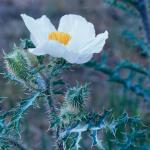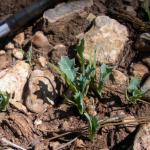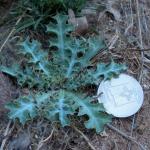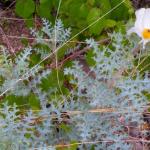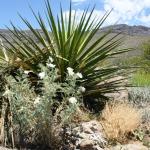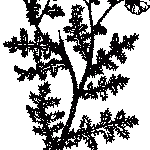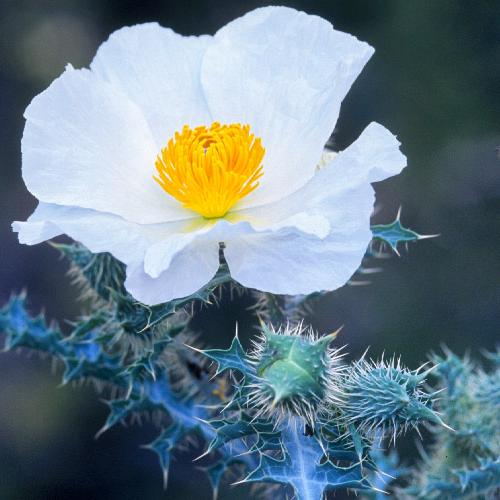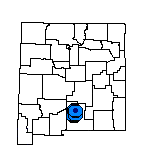Argemone pinnatisecta (Sacramento Prickly-Poppy)
| USFWS | State of NM | USFS | BLM | Navajo Nation | State Rank | Global Rank | R-E-D Code | NMRPTC Status | Strategy Status |
|---|---|---|---|---|---|---|---|---|---|
| LE | E | SEN | S2 | G4G5T2 | 3-2-3 | R | SS |
| Overall Conservation Status | Documented Threats | Actions Needed |
|---|---|---|
| WEAKLY CONSERVED | Livestock ranching/farming, climate change/drought |
monitoring of threat impacts, seed banking |
This plant is being grown at the Rio Grande Botanic Garden in Albuquerque for display, public education, research, and conservation of the wild populations.
*New Mexico Native Plants Protection Advisory Committee. 1984. A handbook of rare and endemic plants of New Mexico. University of New Mexico Press, Albuquerque.
*Ownbey, G.B. 1958. The genus Argemone for North America and the West Indies. Memoirs of the Torrey Botanical Club 21:1-159.
*U.S. Fish and Wildlife Service. 1994. Sacramento prickly poppy (Argemone pleiacantha ssp. pinnatisecta) recovery plan. U.S. Fish and Wildlife Service, New Mexico Ecological Services Field Office, Albuquerque, New Mexico.
*Cervantes, S.D., P. Tonne, R. Govindarajulu, P.J. Alexander and C.D. Bailey. 2010. Population genetic analysis of Argemone pleiacantha subsp. pinnatisecta (Sacramento prickly poppy, Papaveraceae) and re-evaluation of its taxonomic status. Journal of the Botanical Research Institute of Texas 4(1):261-269.
Shinners, L.H. 1958. New varietal names in Argemone (Papaveraceae). Southwestern Naturalist 3:213-214.
For distribution maps and more information, visit Natural Heritage New Mexico


